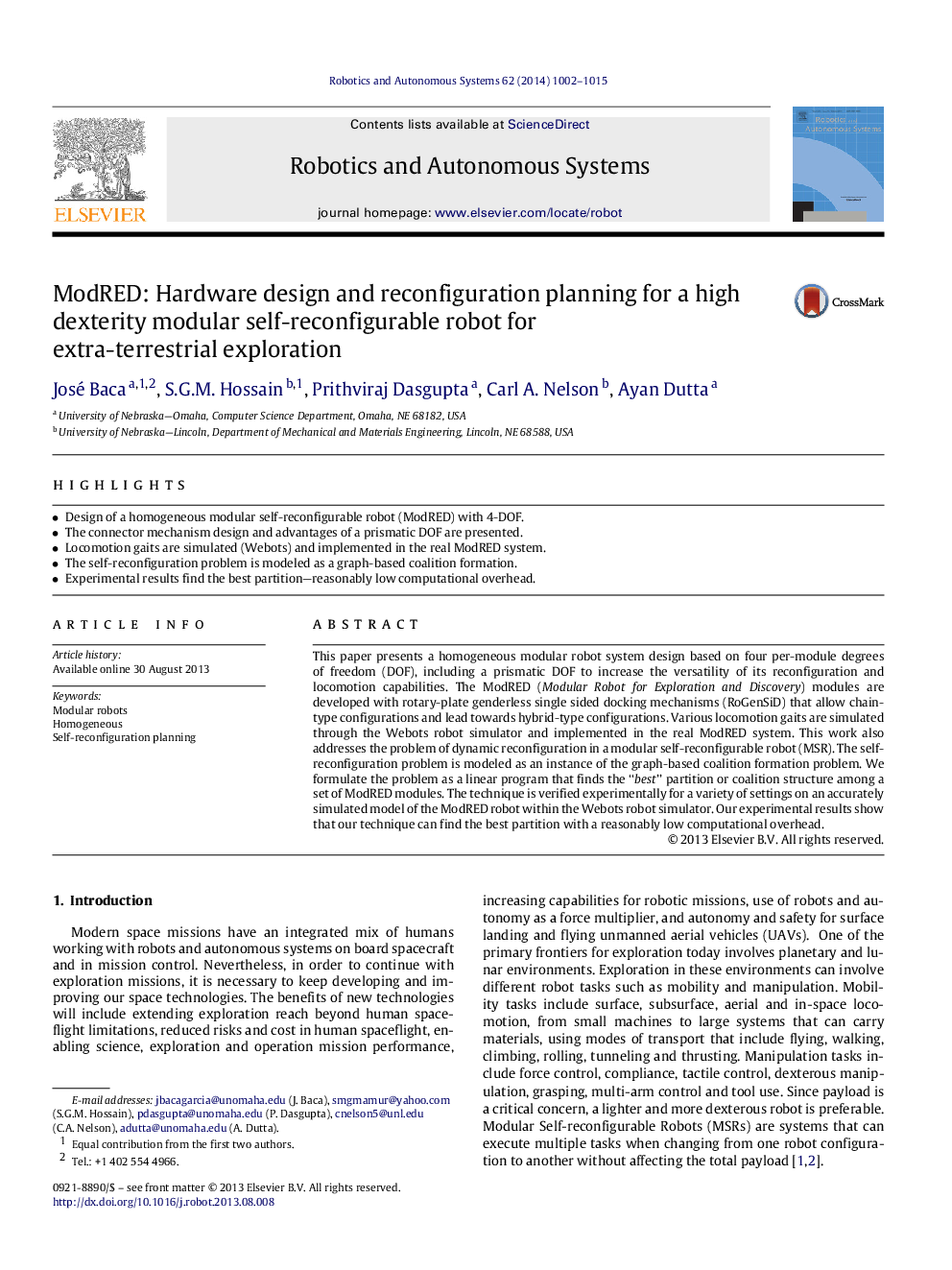| Article ID | Journal | Published Year | Pages | File Type |
|---|---|---|---|---|
| 411296 | Robotics and Autonomous Systems | 2014 | 14 Pages |
•Design of a homogeneous modular self-reconfigurable robot (ModRED) with 4-DOF.•The connector mechanism design and advantages of a prismatic DOF are presented.•Locomotion gaits are simulated (Webots) and implemented in the real ModRED system.•The self-reconfiguration problem is modeled as a graph-based coalition formation.•Experimental results find the best partition—reasonably low computational overhead.
This paper presents a homogeneous modular robot system design based on four per-module degrees of freedom (DOF), including a prismatic DOF to increase the versatility of its reconfiguration and locomotion capabilities. The ModRED (Modular Robot for Exploration and Discovery) modules are developed with rotary-plate genderless single sided docking mechanisms (RoGenSiD) that allow chain-type configurations and lead towards hybrid-type configurations. Various locomotion gaits are simulated through the Webots robot simulator and implemented in the real ModRED system. This work also addresses the problem of dynamic reconfiguration in a modular self-reconfigurable robot (MSR). The self-reconfiguration problem is modeled as an instance of the graph-based coalition formation problem. We formulate the problem as a linear program that finds the “best” partition or coalition structure among a set of ModRED modules. The technique is verified experimentally for a variety of settings on an accurately simulated model of the ModRED robot within the Webots robot simulator. Our experimental results show that our technique can find the best partition with a reasonably low computational overhead.
